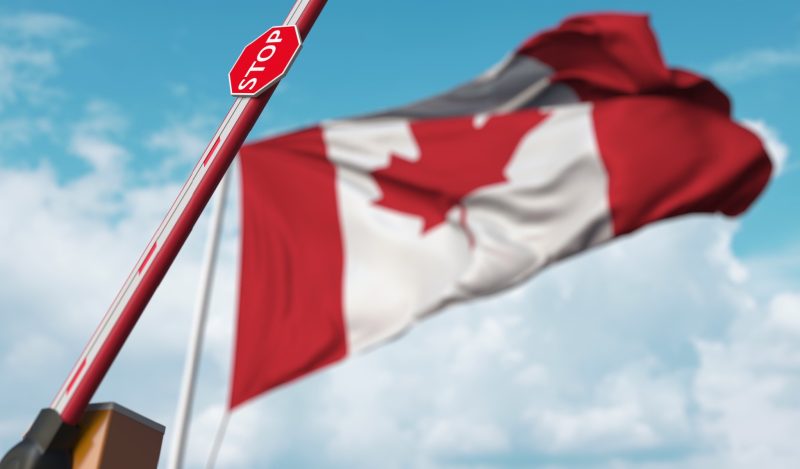President Trump has been very busy lately, driving leftist and Liberal Canadians utterly out of their minds by wickedly and hilariously trolling Prime Minister Justin Trudeau while simultaneously threatening a massive 25% tariff on the Canadian auto industry. With a solitary few taps of fingers on his phone, Trump cornered Canada by brewing an artisan Trumpian “threat to start some conversation” online. It went something like this: “Nice auto industry you got there. Would be a real shame if something happened to it!”
This “conversation starter,” which could also be rightly characterized as an existential death blow to the Canadian auto industry, forced Prime Minister Trudeau to hastily jet down to Mar-a-Lago. There, he unceremoniously flopped in his mission to mitigate damages, which has since been followed by the pilgrimage of several other notable Trudeau lightweights to continue the conversation. Maybe Mr. Wonderful will have better luck.
You could be forgiven if you thought the main lessons learned from this episode are that Canadians have a very fragile sense of humor, and that they bristle at being reminded how fully dependent the Canadian economy is on America. All of that is, of course, true. But if you thought that was the main event, you’d be wrong. The two main takeaways are that any industry that is being protected will, at some point, have an economic and policy moment of reckoning, along the lines of Herbert Stein: If something cannot go on forever, it will stop. And the second lesson is that it will likely play out in part, in real time on X. The Trump-Trudeau show, however, is just a shiny bauble. The real policy landmine in America is immigration, both legal and illegal.
This brings us to the H-1B visa issue in America, which is currently being “debated,” right in front of our eyes on X. On the surface, it seems to be a relatively simple philosophical debate; are you in favor of bringing in foreign workers for the jobs that Americans allegedly cannot do? Or do you favor policies that incentivize hiring Americans? Battle lines are even being drawn among conservative thought leaders and MAGA-adjacent personalities like Elon Musk, Vivek Ramaswamy, and others.
The public divide seems to be about being in favour of skilled immigration, or being anti-immigrant. But this framing is a distraction. The real issue, of course, is how writer Lee Smith puts it, which is that “…H-1B matters because it’s an effect of the core issue — indeed the reason DJT is POTUS — a political and corporate establishment that has waged a half-century long campaign to destroy the American middle class.”
Bingo. And this is where it behooves the Trump administration to learn from the failed Canadian experience with our H-1B visa equivalent: the Temporary Resident Permit or TRP.
Officially, the TRP gives status to non-citizens or permanent residents (the last step before citizenship) to be legally in Canada for a temporary purpose. This can include international students, tourists, or foreign workers. (The TRP does not apply to visa-exempt countries.)
Unofficially, the TRP is a literal cash cow for Canadian universities, and a veritable backdoor to get into Canada via an increasingly shifty diploma mill industry which contains a possible human trafficking element. There are also endless social media accounts that shamelessly explain how to game the system and remain in Canada. Plenty of Canadian corporations have benefitted from the influx of cheap labour, so much so that the Trudeau government has been forced to eat its hat on the TPR program and put new limitations in place, and not just on the TPR program but immigration in general. But the “temporary” population of Canada is now close to 10% of the Canadian population, and Canada has no real plan to get TPR permit holders to go home or to dissuade them from seeking asylum. Unsurprisingly, the temporary population simply doesn’t want to leave.
The final, glaring issue with both the H-1B and TRP is the undeniable fact that they are gateways to North America’s robust anchor baby (“birth tourism”) industry. In Canada, birth tourism, aided and abetted by almost nonexistent enforcement has added extra layers of stress to Canada’s already fiscally unsustainable socialized medical system.
“Temporary” programs in both Canada and America rarely benefit their existing populaces. More often than not, they habitually displace and punish the middle class. That’s a feature and not a bug. The H-1B acts in a similar fashion for skilled, white-collar workers. Moreover, as Milton Friedman famously said, “There is nothing more permanent than a temporary government program.” Here’s hoping the incoming Trump administration takes heed of Canada’s abject failure to rein in its permanent “temporary” population and reigns in the policies that more often than not, discriminate, decimate, and impoverish the native citizenry.
Join the conversation:


Published under a Creative Commons Attribution 4.0 International License
For reprints, please set the canonical link back to the original Brownstone Institute Article and Author.









